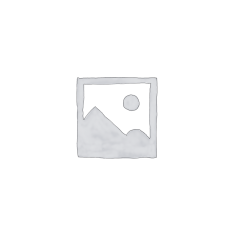Description
TABLE OF CONTENT
Title page i
Certification ii
Dedication iii
Acknowledgement iv
Table of content v
Abstract viii
CHAPTER ONE 1
1.0 Introduction 1
1.1 Statement of problem 3
1.2 Aim and objectives of the study 5
1.3 Scope of the study 5
1.4 Justification of the study 5
CHAPTER TWO 6
2.0 Literature review 6
2.1 Background of the study 6
2.1.1 Type of tricycle 8
2.1.1.2 Recumbent delta Tricycle 10
2.1.1.3 Recumbent Tadpole 11
2.1.1.4 Recumbent hand crank 12
2.1.1.5 Recumbent Tandem 12
2.1.1.6 Special Purposes 13
2.1.17 Tricycle Rickshaw 13
2.1.1.8 Freight tricycle 14
2.2 Important of tricycle 15
2.3 Casting 15
2.4 Sand Casting 19
2.5 Moulding sand used 20
2.5.1 Refractoriness 21
2.5.2 Chemical inertness 22
2.5.3 Permeability 22
2.5.4 Surface finish 22
2.5.5 Cohesiveness 22
2.5.6 Flow ability 23
2.5.7 Collapsibility 23
2.5.8 Availability 23
2.6 Aluminium 23
CHAPTER THREE 28
3.0 Experimental procedure 28
3.1 Pattern making 28
3.2 Casting of the product 28
3.3.1 Crucible Pot 29
3.3.2 Crucible Furnace 29
3.3.3 Drag and Cope 30
3.3.4 Rammer 30
3.3.5 Scrapper 30
3.3.6 Charcoal 30
3.3.7 Shovel 30
3.4 Steps involves in the casting operation 31
3.4.1 Sad preparation for moulding 31
3.4.2 Melting of Aluminium 32
CHAPTER FOUR 34
4.0 Experimental procedure 34
4.1 Lather machine 34
4.2 Universal testing machine 34
4.3 Results 35
4.4 Discussion 35
CHAPTER FIVE 37
5.0 Conclusion and Recommendations 37
5.1 Conclusions 37
5.2 Recommendation 37
Reference
ABSTRACT
A tricycle is a three wheel vehicle use in conveying goods and human from one place to another especially is the rural and farm area absorbing energy from moving system, drakes are generally applied to a rotating axle or wheels but may also take other form such as a moving fluid. Brake pedals are irregular in shape in at least the direction. Casting of the brake pedal is to reduce the weight, the sand casting is a process by which sand is use to prepare the mould. The pattern is made with a manna wood. Aluminiun was used to east the part. During the casting of the product to increase the strength of the aluminium, silicon was added to it during melting. Specimen were also produced which was latter machined and due for tensile test.
CHAPTER ONE
1.0 INTRODUCTION
Brakes are generally applied to rotating wheels and may also take other forms such as the surface of a moving fluid. Some vehicles use a combination of braking mechanisms such as drag racing cars with both wheel brakes and a parachute or airplanes with both wheel brakes and drag flaps raised into the air during landing.
A brake is a mechanical device that inhibits motion by absorbing energy from moving system. It is used for slowing or stopping a moving vehicle wheel, axle or to prevent its motion most often accomplished by mean of friction.
The brake pedal is composed of two half pieces and facing and joined to one another by two welding lines or beads which prior to their welding or subsequent to the same have been suitably bent and to whose brake pedal body the necessary finishing operation have been applied, such as the elimination of external projections caused by the welding and those possible ones on making orifice for the passing of the articulation axis of the body and other orifices such as orifice, for other complementary passages. The joining of said half pieces and is done by facing their two corresponding edges or by partial juxtaposition of their respective ends, these half pieces being out of phase with each other.
Brake pedal bodies are frequently irregular in shape in at least one direction which has given rise to the problem that are difficult to solve, which repercussions on both the tooling, the manufacture and the final product, all of which negative affects the cost of the brake pedal body.
At present much tricycle have brake pedal that is made of steel. A brake pedal may consist of three major components namely brake pedal, rubber foot and switch pad contact. Each brake pedal component has to undergo a series of sheet forming processes before assembled together by welding process. Changing the material of a brake pedal to lighter materials such as aluminum may affect the final geometries and the manufacturing process requirement.
In aluminum alloy brake pedal production, casting has an advantage of producing in single process and suitable to substitute the original manufacturing process (combination of press forming and welding process). However, castability of brake pedal should be investigate and analyze early in design in order to form the component without formation of effects such as cracks, segregations, pores or misruns. There are three major approaches for castability analysis process simulation, parametric cost estimation and feature based castability checks. Geometric features such as under cuts, holes, sharp corners and hot spots were recognized from a solid model of the casting and analyzed by a number of dimensionless criteria function. These criteria were developed through a detailed study of design heuristics used by practicing engineer and were whiten as functions of geometric attributes of component and tool features.
An original brake pedal design was evaluated and the geometries that were critical modified and redesign to a new brake pedal design. The comparison between these two designs was carried out to prove that the modified brake pedal design is better in terms of castability.
1.1 STATEMENT OF PROBLEM
The evaluation of brake pedal has been impressive, and has included many technologies throughout the years. In all new developments to the braking system the number one priority is to improve auto safety and efficiency with little cost.
Over time, the original brake pedal have welded part and further research carried out show that casting can eliminate the following from the original brake pedal;
- Welded joints are more brittle and therefore their fatigue strength is less than the member joined which will be eliminated when it is casted.
- Due to uneven heating and cooling of the member part during the welding the members may distrust resulting in additional stresses.
- Skilled labour uses either electricity or fuel to weld which attracts additional cost.
- No provision for expansion and contraction is kept in welded connection and therefore there is possibility of racks.
- The inspection of welding work is more difficult, complex and costly than the casting work.
In addition, the Chevrolet motor company also stressed the fact that the original brake pedal is too heavy which make the tricycle heavy and with the casting method, it will help to reduce the weight of the brake pedal and also the weight of the tricycle.
The original brake pedal is too expensive to purchase in the market to replace the original one when its goes wear. With the help of local casting, it will make it available and cheap to purchase in the market.
1.2 AIM AND OBJECTIVES OF THE STUDY
- To reduce the weight of the brake pedal assembly.
- Reduction of machining requirement compared to the original steel assembly.
- Elimination of the welding and finishing operations required for the original steel welded assembly.
- To reduce the cost and the time of the production process.
- To reduce the risk of serious lower limb injuries the driver in a frontal collision.
1.3 SCOPE OF THE STUDY
The scope of study covers only the casted brake pedal produced for experimental purpose at the polytechnic foundry workshop.
1.4 JUSTIFICATION OF THE STUDY
- To examined whether the aluminium can withstand high pressure.
- To make alternative for the original brake pedal without cost
- To improve the casting process
- To eliminate the welding joint
CHAPTER TWO
2.0 LITERATURE REVIEW
2.1 BACKGROUND OF THE STUDY
The first tricycle was built in 1680 for a German paraplegic named Stephan Farffler, who lived near Nuremburg. He was a watch-maker and the tricycle has gears and hand cranks.
On November 18, 1876, James Starley introduced the Coventry Lever Tricycle, a side-driven two-track, level-driven machine, and that started the tricycling craze in Great Britain. It had two small wheels on the right side, that both steered simultaneously. A large drive wheel was on the left side. In 1877, he introduced the Coventry Rotary, one of the first rotary chain drive tricycles.
From 1881 to 1886 in Great Britain, more tricycles were built than bicycles, but this was primarily a class phenomenon, since tricycles were more expensive, perceived as more genteel, and the upper classes had the disposable income to buy them for the women in the family. As a result, tricycling remained popular in Great Britain long after riders turned away from them elsewhere. They even has regular racing


Reviews
There are no reviews yet.